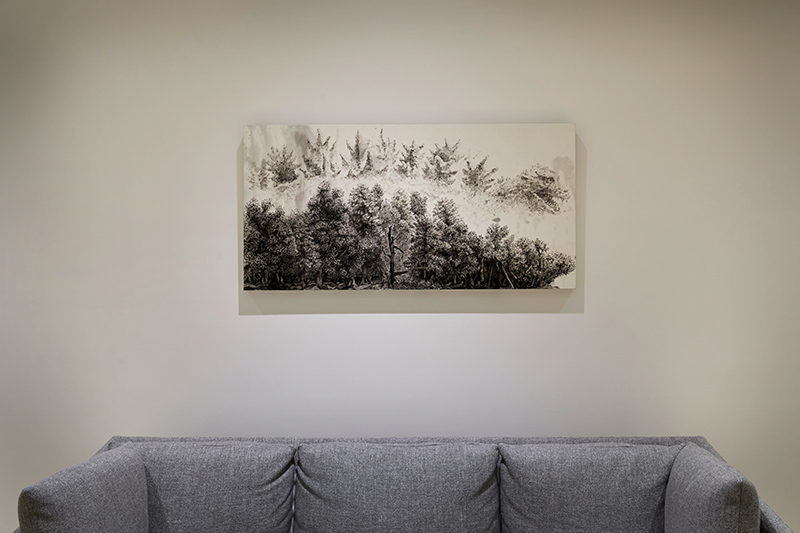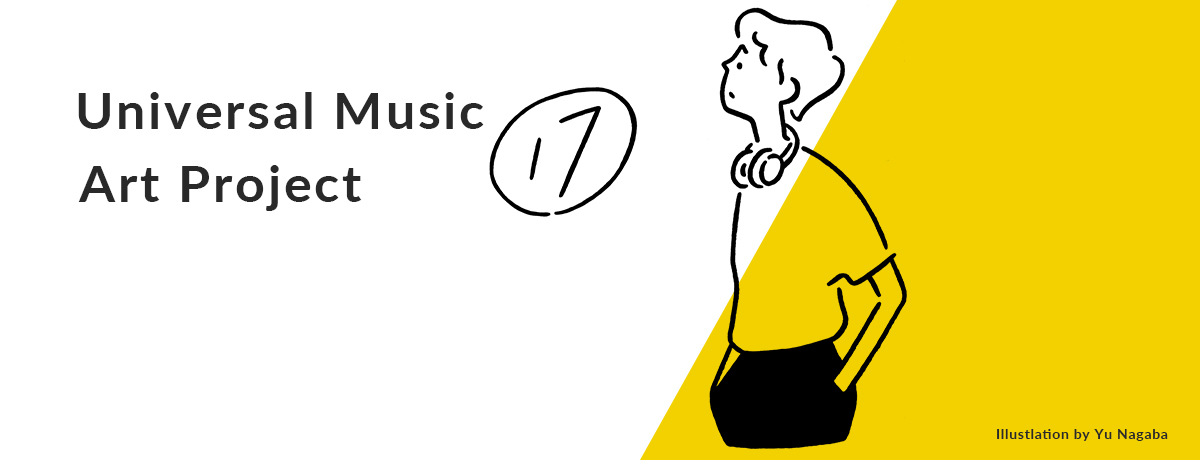Hayaki Nishigaki “Two steps forward, one step back”

PROFILE
Born in Hyogo Prefecture in 1985. Completed a master’s degree at Kyoto University of Art and Design Graduate School (Art and Design Studies, majoring in Art Communication) in 2012. He was involved in the planning and operation of the Festival of Kyoto Sento Art, and with the motif of “Godzilla as a Utensil” he has created painted works with Japanese washi paper and sumi ink. Major achievements include winning the Suda Award at the Kyoto Exhibition 2016 and the Grand Prize at the Shibuya Art Festival 2017.
DATE
2019
MEDIUM
ink, charcoal pencil on washi
DIMENSIONS
H60×W120×D4cm
STATEMENT
The word “cosmetics” shares the same etymology with the word “cosmos,” which means “space,” “universe,” or “order.” Long ago, people painted their bodies with mud and decorated themselves with stones, in an attempt to communicate with this mysterious universal order. But then the Industrial Revolution gave people the techniques of manipulating nature, allowing man to create the new order. Kuniyoshi had a fascination with western art, and amassed such a collection as to show it to others. I suspect his research showed him the concept that westerners (people) created space (order). Based on the paintings of Arcimboldo, he decorated his figures’ faces with naked “people” in a satirical statement on “cosmetics.” From the point of view of the animistic Japanese, that western way of thinking likely seemed both innovative and violent. The original Godzilla appeared on the world stage to speak on behalf of the Japanese people, the only nation in the world to have experienced the atomic bomb. As times changed, he transformed into a hero, then his films became about environmental issues, he became a father with his son appearing in the films… Godzilla was placed in a certain period’s historical context, but he has become a monster who wanders about without context or identity. This Godzilla with no concept of self was made to have a value (the Japanese people) of being a vessel to speak on behalf of something, but on the inside, he was something completely removed from the core of what the original Godzilla was. A phenomenon not dissimilar to that exists in modern information communication. Online communications such as e-mail and social media have their communication environments set up in a position removed from the writer, with the communication constantly controlled. And in that environment, the communication of the special sense of self is lost, recorded, manipulated, by a variety of fixed-text pastiches. In other words, our communication promotes unconsciousness in such an environment, enabling smooth communication. Once nature existed as an order, applying mud to engage in dialogue, with cosmetics expressing a desire for communication. That desire itself has been simplified, resetting it and enabling an environment with a new order. By adopting the line of sight and methods of Kuniyoshi to stare at what lies inside, I cosmeticize fixed-text/order into a container/Godzilla (Japanese people). My purpose is to paste ink as a recording material to a monster as a vessel, to bring to the surface that which lies beneath, and to rethink and re-present the desire for communication.
ABOUT MUSIC AND ART
When I was in my thirties, nostalgia really set in. I know the songs from movies and television. When I listen to them, I can’t help but remember the times when I first heard them. Strangely, the “Song of Mothra” is a song that summons Mothra to “come,” but at times it feels like it is calling to me as well. She always lays eggs and fights for the next generation. In other words, it is similar to appreciating the way art collects the past, because it connects time from point to point and brings enemies down. While listening to MOTHRA THE BEST: 1961–1998, I wonder about the “serialization of culture” that Japanese people tend to lack. Spring will come again, but the same spring will never come twice.
Hayaki Nishigaki PLAYLIST


